| Close to Williamsburg is Jamestown which was the site
of the first English settlement to succeed. The settlers came over from England and landed on
4th May 1607 in three ships. This model is of the Godspeed, a cargo ship of 40 tons
captained by Bartholomew Gosnold and carried 39 passengers and 13 crew. It
was 88ft long and 17ft wide, a mast height of 71ft and a draft of 9ft. The
voyage lasted 144 days, which must have been very uncomfortable in such a
small ship. | 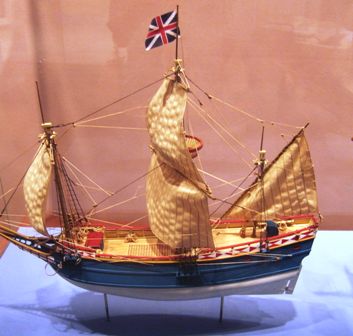 |
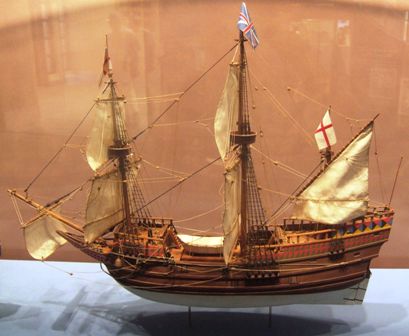 |
The flagship of the group was the Susan Constant. It was 116ft long and
24ft10in in the beam. The masts were 95ft high and the draft was 11ft9in.
She weighed 120 tons and carried 54 passengers and 17 crew. The captain was
Christopher Newport. |
| The smallest ship was the Discovery. This was a
pinnace with a crew of 9 and 12 passengers. She was 66ft long and 14ft wide.
Her mast was 59ft and her draft 6ft 6in. She weighed in at 20tons and was
captained by John Radcliffe. The party boat I once rowed on the river at
Knaresborough was over 30ft long and 7ft wide and carried 40 passengers. I
cannot conceive crossing the Atlantic in the Discovery! | 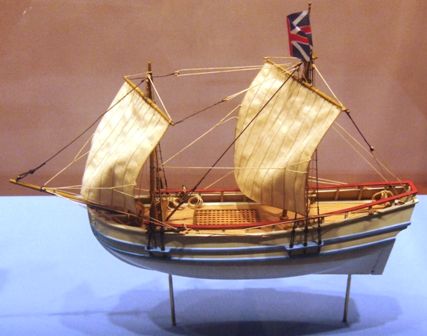 |
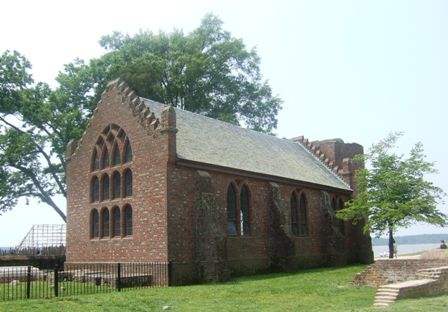 |
Equally bizarre is that almost the first thing you build on these alien
shores is a church. This takes precedence over the food store and almost
over the walls. Admittedly this wasn't it. The first church was built of
wood and burned down in
1608. It was replaced by a second of similar design. The third church was
also built of wood but on cobblestone foundations which can still be seen
within today's church. The fourth was built in 1639-47. This burned down
during Bacon's rebellion in 1676. The fifth church was more substantial,
being built of bricks,
and lasted until the 1750s when it fell into disrepair. The bricks were then
used to build the gravestone wall in 1790. The present church was built in
1906 using parts of the original 1647 tower. |
| Fortunately most of the natives were initially
friendly. This is a statue of Pocahontas who was a favourite daughter of
Powhatan who ruled the local tribes. She was born in 1595 and married to the
original settler John Rolfe in 1614 in the third church. She visited England
in 1616. She died in 1617 while returning to Virginia and is buried in
Gravesend, England. | 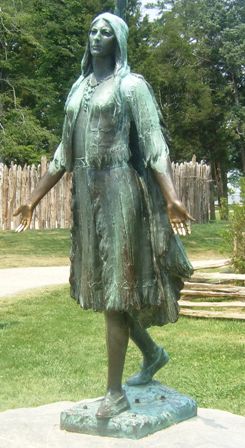 |
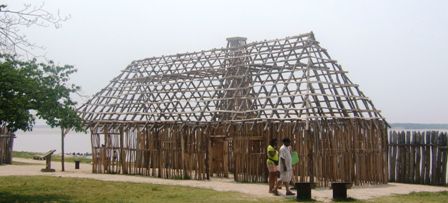 |
Here is an example of the first building type and may well have been the construction form
used in the first church. This is known as mud and stud
construction. Similar methods were used at the time in Lincolnshire from
whence many of the early settlers came. |
| A stout stockade was built around the settlement. Note
that wooden pegs were used instead of nails since these were in very short
supply and could not yet be manufactured locally. | 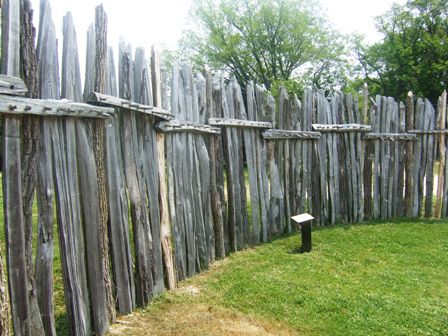 |
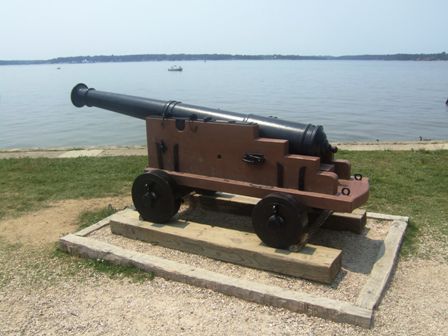 |
They only had small cannon for protection and it is likely that these were
used more for signalling than serious action. We kept being asked why we
hadn't visited Jamestown a couple of weeks earlier when the Queen came. We
thought it would have been much too busy and besides, we've seen her. She
made a big impression on the Americans though
I suspect this cannon did not fire a salute! |
| There are two sites at Jamestown. One is a national
park at the original site, the other is more a commercial museum with
replicas, but very well done with each
period in history in a separate hall.. | 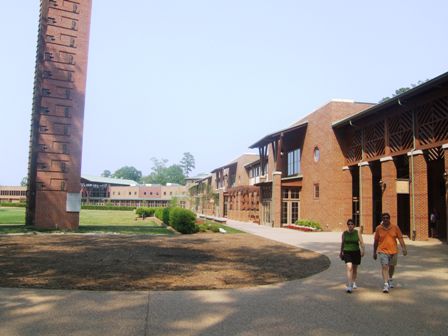 |
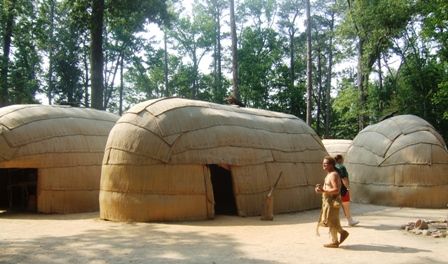 |
Outside is a Powhatan village showing the construction methods they used.
These houses would have been very practical and would have been fairly easy
to move, important in their nomadic lifestyle. But these tribes also farmed,
and there are several docents tending the crops of corn and squashes and
carrying out other tasks, and telling the visitors about how they lived. |
| Inside is also well laid out with furs, pots and
baskets. They are also cool with two entrances to provide a through draft. | 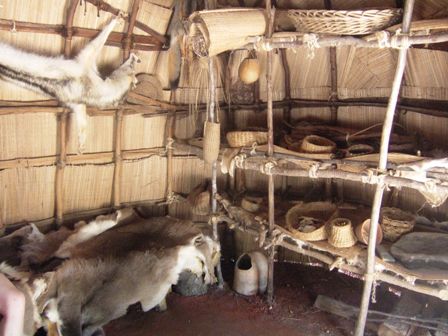 |
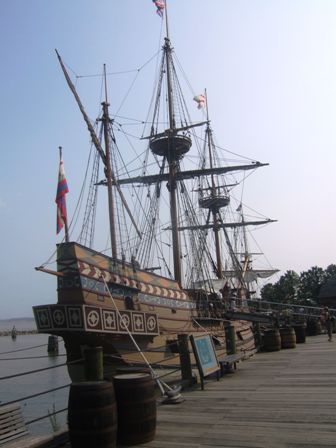 |
Down at the harbour are replicas of the three ships on which the settlers
arrived. This helps to fix the size of the ships much better than the
models. These replicas have all been made in the last ten years and are all
capable of sailing up and down Chesapeake Bay. They obviously do this since
we ran into an event at which one was to appear a few days later. With the
400th anniversary being this year, I think they have been quite busy. |
| We went on board the Susan Constant and were able to
wander up and down. There isn't much room even with only ten or so tourists
on board. It must have been horrendous when fully loaded. | 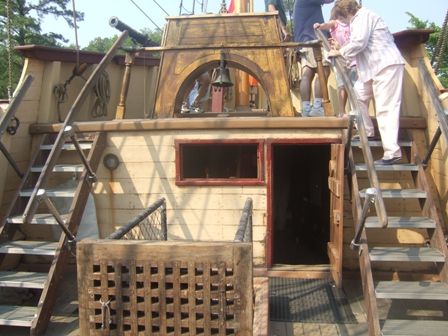 |
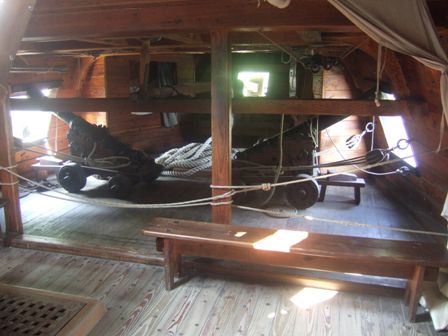 |
Down on the lower deck is very cramped. You have to duck your head all the
time. There are so many obstacles that it must have been very dangerous in
the dark and with a pitching sea. The ship had a few small cannon so it was
not unprotected. |
| Looking down on the pinnace Discovery, it seems very
small. Pleasure motor boats for pottering about Chesapeake Bay are
larger... | 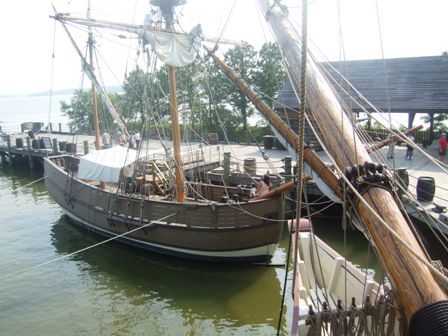 |
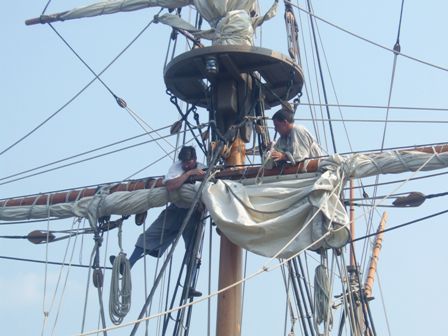 |
Up aloft the sailors are re-lashing a sail. I would have been wary of trying
to do that in harbour much less at sea and in the midst of an Atlantic gale! |
| Back on land is a replica of the fort which was built
by the settlers although this is now quite a substantial undertaking. The
houses are solidly built but represent a slightly later period when
the community was beginning to thrive. | 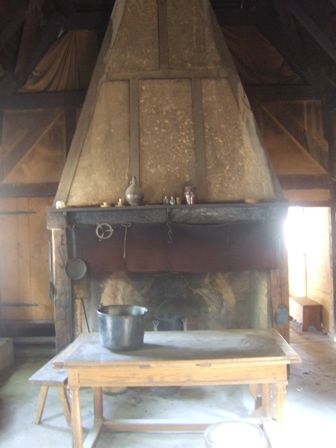 |
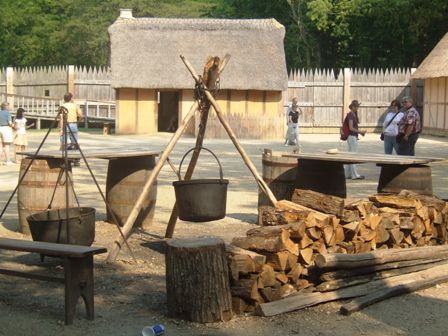 |
The houses are still built in styles of the period but this seems more
Suffolk than Lincolnshire to me. Most cooking would still have been done
outside. |
| The church here is a substantial building 50ft by 20ft
and thus is likely to represent the third church which thus dates the site
portrayed to the mid 1650s. | 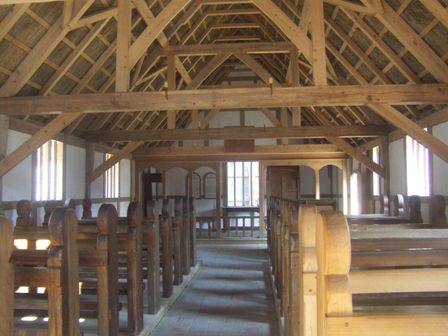 |
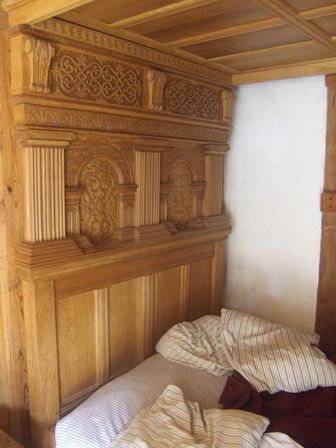 |
Inside the houses there are some surprises including this beautifully carved end to a
bed. I cannot believe that they would have had the time to produce work like
this at a time when over half the original settlers were being killed or
died within the first few years. It really was touch and go for a while and
indeed there was an earlier settlement at Roanoke which vanished without
trace. Even these settlers were preparing to abandon the settlement and
return to England when a supply ship turned up in the nick of time. |
| These houses seem fairly solid, I don't think the
settlers had such good accommodations when they first began to build. But we
were running out of time and they were on the point of closing so we had
little opportunity to explore deeper. | 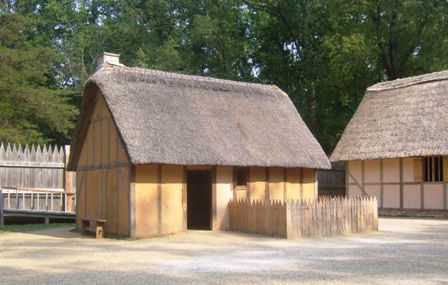 |
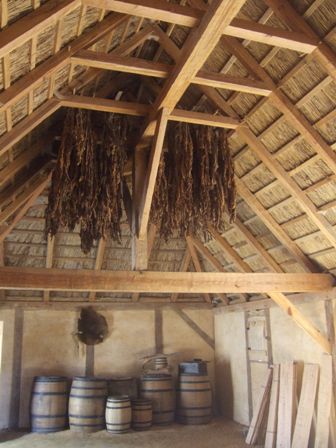 |
The store was also substantial, but it would have been vital that the meagre
supplies brought in by ship and grown were protected from the elements. We
would have liked to have debated the construction but it was time to move
on. |
|